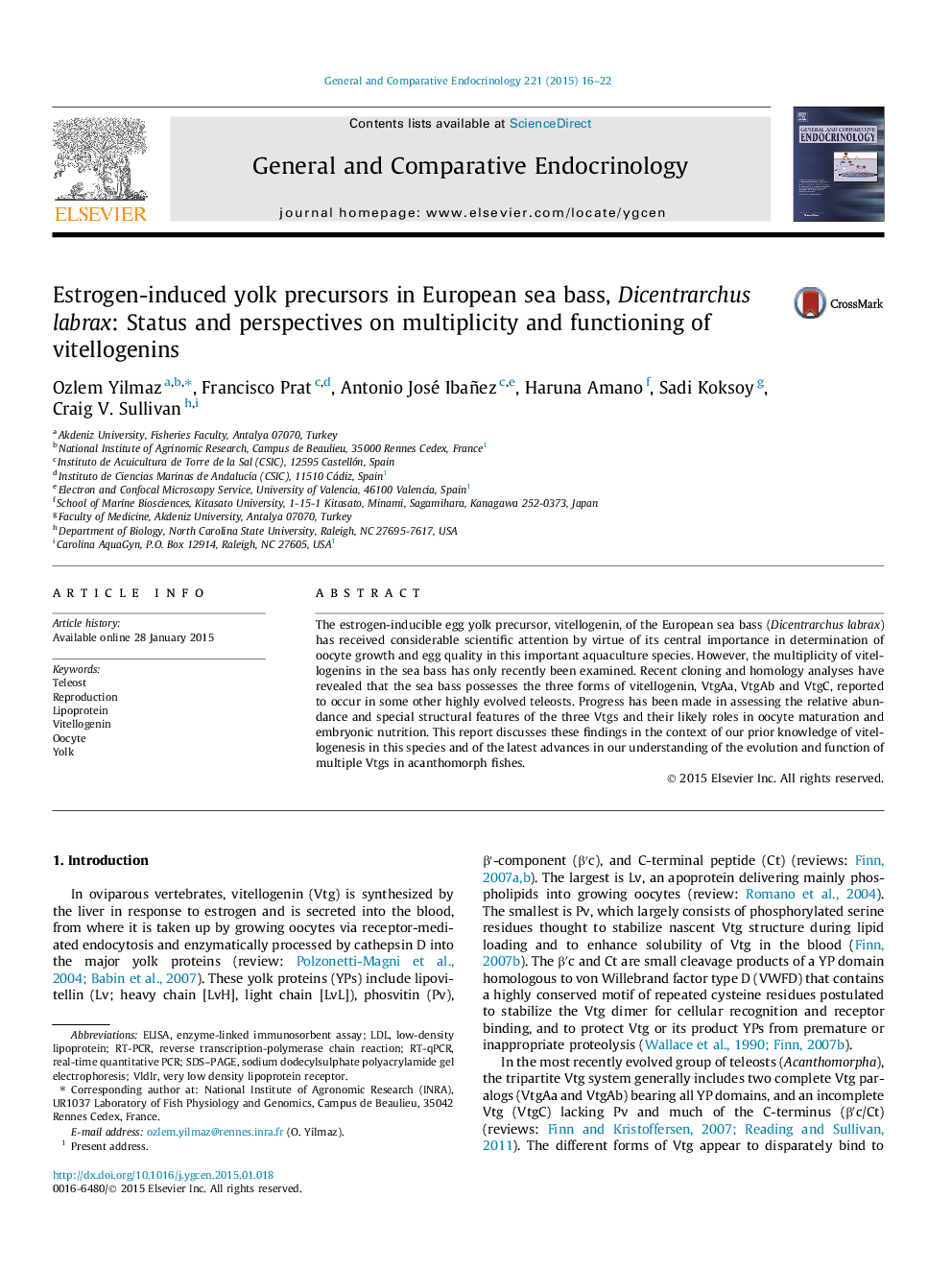| Article ID | Journal | Published Year | Pages | File Type |
|---|---|---|---|---|
| 2799902 | General and Comparative Endocrinology | 2015 | 7 Pages |
•Vitellogenesis in the European sea bass, Dicentrarchus labrax, is reviewed.•Sea bass have the tripartite vitellogenin system seen in some other acanthomorphs.•The vitellogenins (VtgAa, VtgAb and VtgC) are highly conserved in Moronidae.•Structure of the receptor-binding domain of VtgC differs greatly from A-type Vtgs.•All three types of lipovitellin heavy chain undergo limited maturational proteolysis.
The estrogen-inducible egg yolk precursor, vitellogenin, of the European sea bass (Dicentrarchus labrax) has received considerable scientific attention by virtue of its central importance in determination of oocyte growth and egg quality in this important aquaculture species. However, the multiplicity of vitellogenins in the sea bass has only recently been examined. Recent cloning and homology analyses have revealed that the sea bass possesses the three forms of vitellogenin, VtgAa, VtgAb and VtgC, reported to occur in some other highly evolved teleosts. Progress has been made in assessing the relative abundance and special structural features of the three Vtgs and their likely roles in oocyte maturation and embryonic nutrition. This report discusses these findings in the context of our prior knowledge of vitellogenesis in this species and of the latest advances in our understanding of the evolution and function of multiple Vtgs in acanthomorph fishes.
Graphical abstractFigure optionsDownload full-size imageDownload as PowerPoint slide
